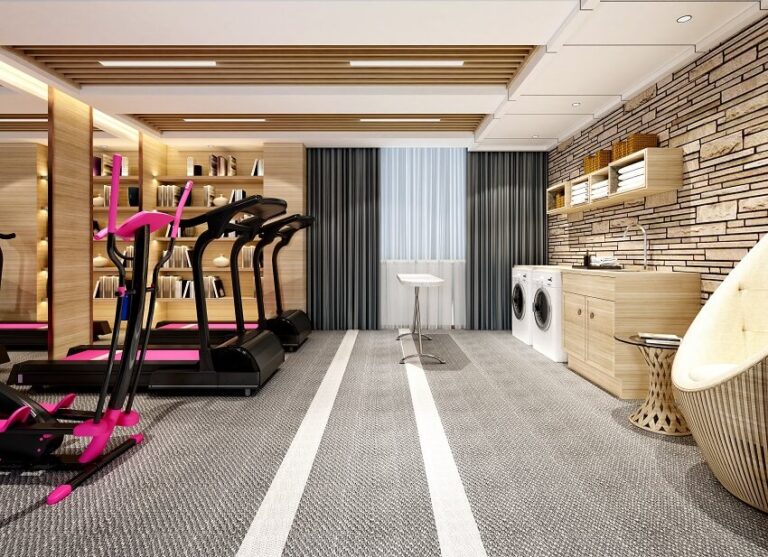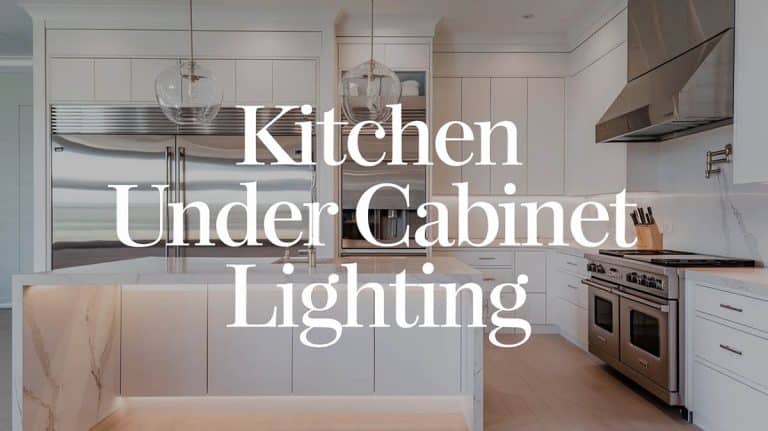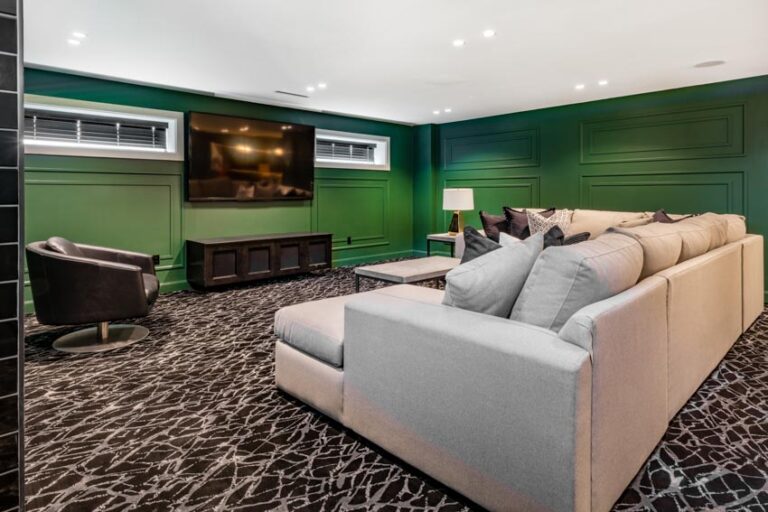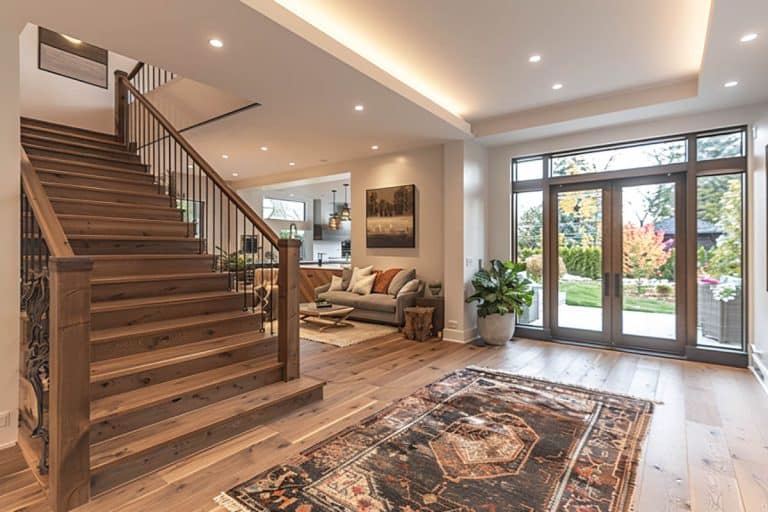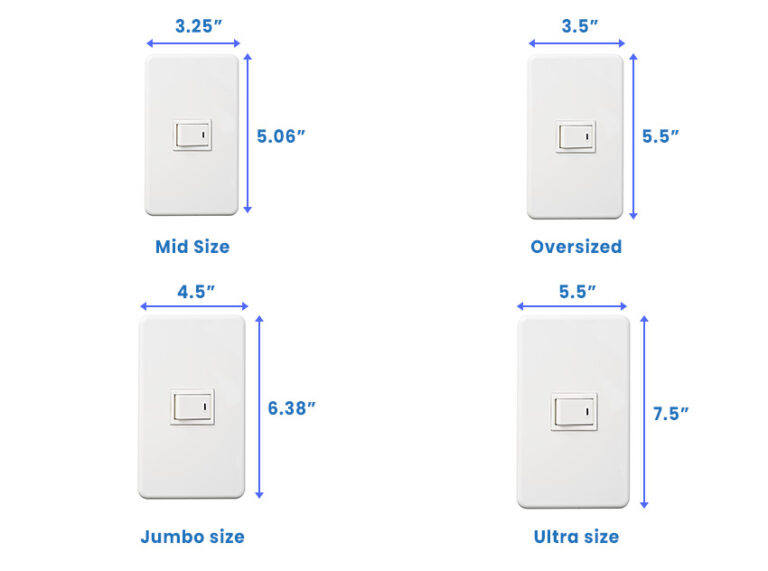Where To Put Floor Lamps In The Living Room?
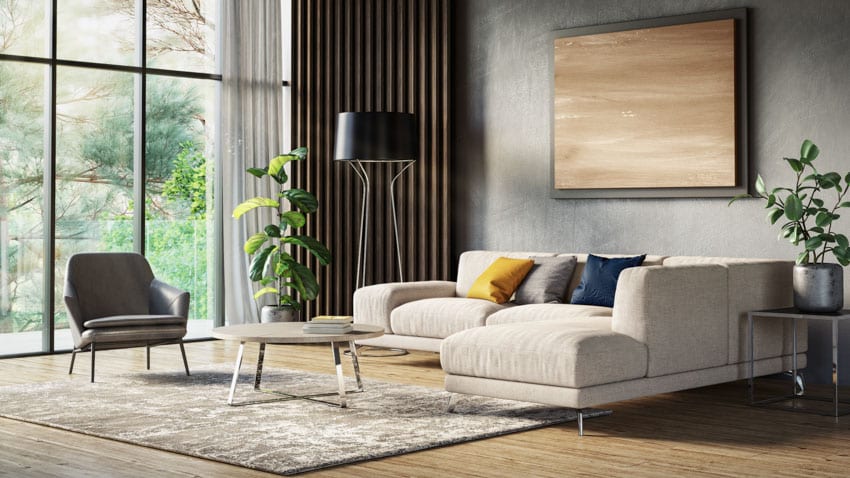
Floor lamps are functional and decorative, they add a stylish lighting element to living rooms. Floor lamps are designed to provide a brighter and higher light than other types. It produces ambient light that reflects off the walls and ceiling. Lamps must be positioned strategically to make sure you get the light you need and keep your decor looking great. In this guide, we’ll take a look at where to place floor lamps in your living room for maximum benefit.
Floor lamps often double as task lighting, allowing light to be focused downwards to illuminate a workspace and placed over a sofa, couch, or desk area. Usually, the floor lamp’s head is at chest height or eye level and can be taller than the standing height of a person. The common place to add a floor lamp is next to the seating area, however, when it is close to eye level it may be possible to see the underside of the lamp when seated.
In this case, consider placing the lamp further from the sitting area such as between an accent chair and a table or behind a sofa for a comfortable and relaxing reading experience. By doing so, it can reduce eye strain from being too exposed to the bulbs. For this, we suggest choosing a floor lamp that is at least sixty-eight inches high because it can conceal the light bulb whether you are standing or sitting down.
Tall floor lamps are best placed by the living room corner to fill an empty space and add ambiance lighting that will help illuminate the space, adding functionality and style that will draw focus on the furniture, making the room appear cozy and warm. The same goes for the floor lamps placed by a window, this setting creates an elegant and pleasing element in the design layout.
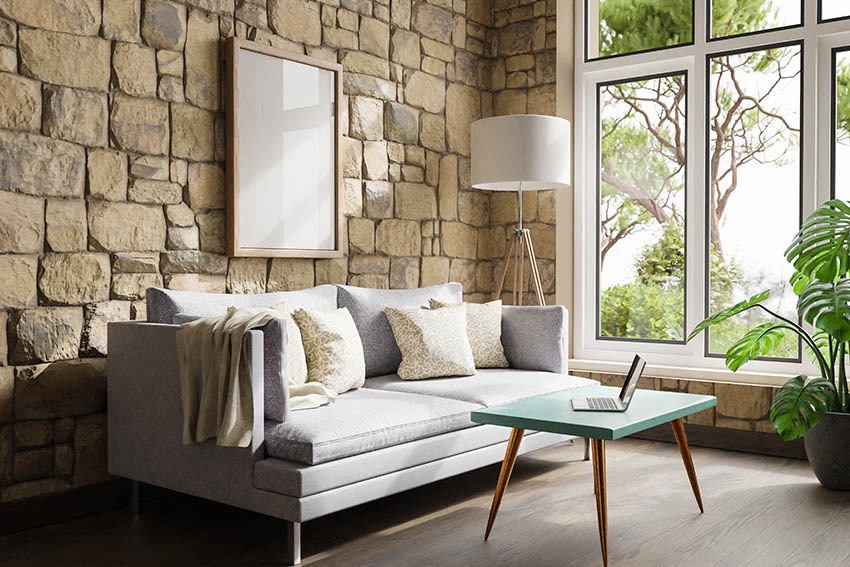
You can place a decorative floor lamp near the window to light up the room at night adding a dramatic vibe to the living area setting. If you want to have floor lamps in your TV room, make sure that it casts soft light so that its glare doesn’t cause eye strain and that the light does not reflect off the screen.
The best spot to place floor lamps is on either side of the TV, such as the corners, or behind it for the purpose of creating a contrast in the room when the other light sources are off thus, adding ambient lighting to the room. Typically, the best benchmark for having adequate lighting in a room is to have at least four sources of light if there is no overhead lighting.
One or two floor lamps should be enough for a living space, while a larger living floor plan may require up to three, especially when arranged with other types of lighting such as a ceiling light, reading light, or ambient fixture. While a single floor lamp can provide a balance in the space, having a pair of lights can emphasize a part of the living room such as a reading corner, or desk area, and may also draw one’s focus on a focal point in the room such as a window, an artwork, or a mantle.
Keep in mind that creating a chic look with floor lamps, don’t be afraid to mix and match. You should allow the flexibility that comes from different styles of floor lamps to add to the experience and visual interest in your living room. Always make sure that there is a balance between your choice and other elements in your living room.
Lamp Placement Tips
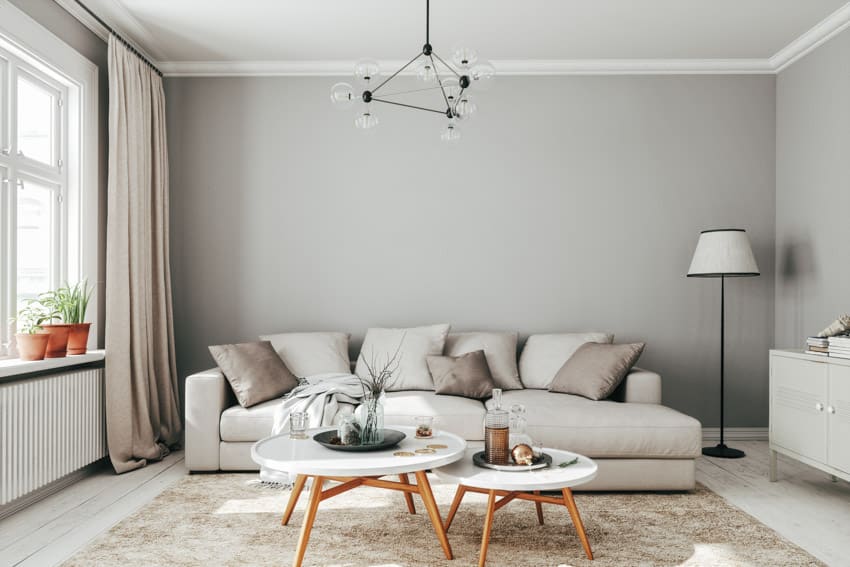
When it comes to where to position the floor lamp in the living room, you have a lot of options. The first thing you’ll want to consider is whether you’re looking to add ambient lighting or task lighting.
Task lighting refers to a light that’s set up to illuminate a workspace like a desk or maybe that chair that you often sit in to read.
For this, a floor lamp with a swiveling or adjustable light is an excellent tool. Alternatively, rather than a floor lamp, it can be beneficial to turn to a smaller light that you can strategically place on tables or shelving to shine them exactly where you need them to go.
Another alternative to the different types of floor lamps that could help with task or ambient lighting – which we’ll go over in a minute – includes wall lights.
These fix to your walls rather than your ceiling, giving you light directly where you need it without taking up any floor space. As mentioned, the other type of lighting you might want in your living room is ambient lighting.

Ambient lighting refers to light sources that contribute to generally brightening a room rather than just focusing on a single, high-use area within it. Floor lamps that shine generally outward or upward rather than in a single area are an excellent choice for adding a little ambient lighting to a room.
You can focus on brightening the highest-use parts of the room first. We don’t quite mean using task lighting here but rather adding more general, ambient lighting to areas that you and other people in your living room might frequent. That’s why it’s so common to place floor lamps next to chairs and sofas to make sure that no matter what seat in the living room you have, it’s well-lit.
One tricky area for placement is in relation to your TV. After all, you don’t want to have to deal with a glare but you also want enough light to see your way around everything on your entertainment system as well.
Should You Put Lamps Next To The TV?
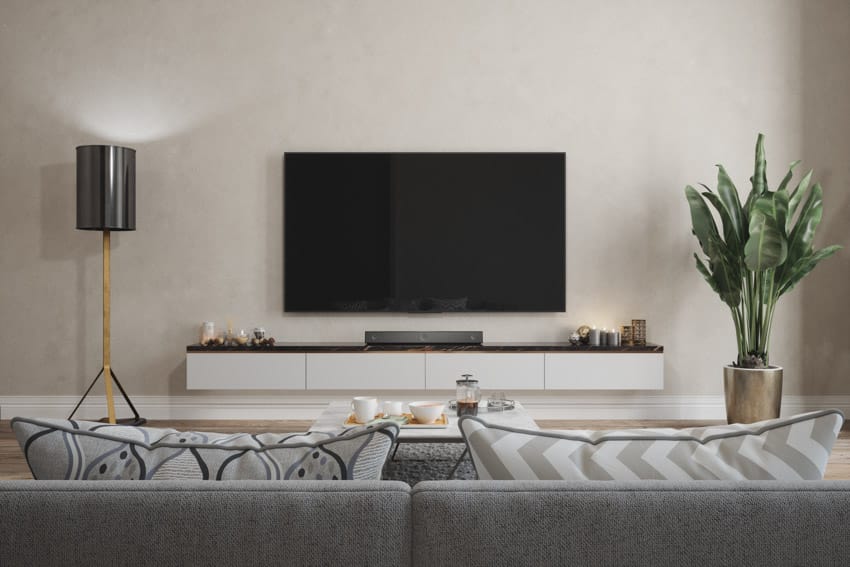
As we mentioned earlier, you can place lamps around and behind your TV to add more ambient light to the room. This is a great way to reduce glare as well since putting one across the room for your TV might just end up leaving you with a blind spot on your screen.
One of the biggest goals you’ll want to achieve is placing lamps in your living room that won’t leave a distracting or obstructing visual on your television screen.
This doesn’t mean that you shouldn’t have any lights when you’re watching TV either, though. Low light can cause a lot of eye strain, for one, since when you’re watching TV, it’s not like sitting in a room with a bright light source.
You’re staring directly into that light source and if it’s seemingly amplified by the darkness around it, your next binge-watch could end with a headache if you don’t light the area well.
So, what’s your best option? Ideally, you should put your lamps on either side of or behind your TV. These lamps should focus on ambient lighting to add some general lighting to the room rather than adding additional bright, focused beams of light like task lighting to the scenery. Moreover, these lighting fixtures can also help if you’re thinking about decorating around a TV.
After all, a big part of this lighting placement is to help reduce the strain on your eyes, not add more focused light to strain them further.
As for lamps in other parts of your living room, you’ll want to remember to check them in relation to the TV. The last thing you want is to think that you’ve placed a lamp perfectly only to realize it shines right on your TV when you try to sit down and enjoy your favorite show in the evening.
Can You Place A Freestanding Lamp by the Window?
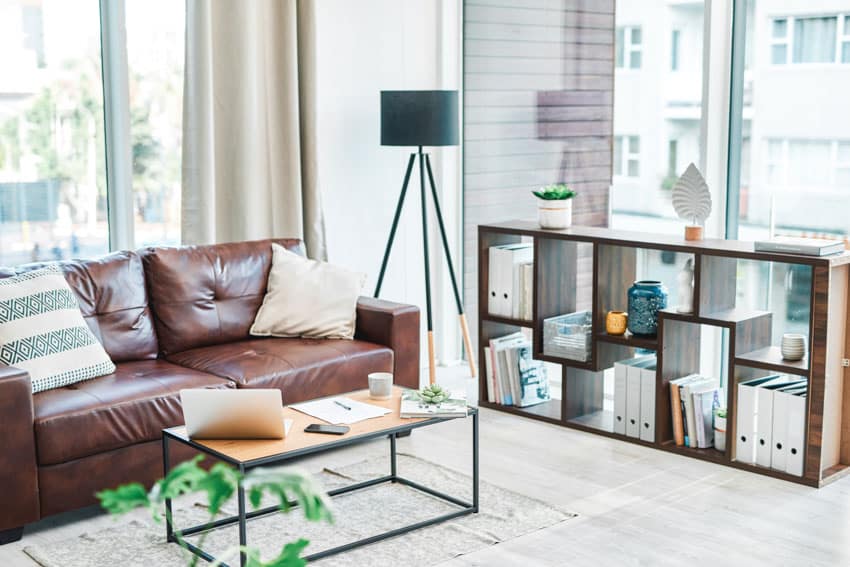
When thinking about where to put floor lamps, during the day, you can usually rely on windows, at least a little bit. After all, natural light is an asset during the day. On the other hand, when the sun goes down, you don’t have access to that source of light anymore.
If you want to keep the light from the same general area once the sun goes down, putting a floor lamp by your windows can offer that same light when the sun goes down. On top of that, you can use a floor lamp to draw attention to your different types of windows or, more commonly, the view outside of it.
By using a floor lamp by a window, you can create a focal point that draws the eye into the room which will naturally lead the eye of the person to the window as well. By extension, this includes the view from the window as well.
How Many Lamps Should You Use?
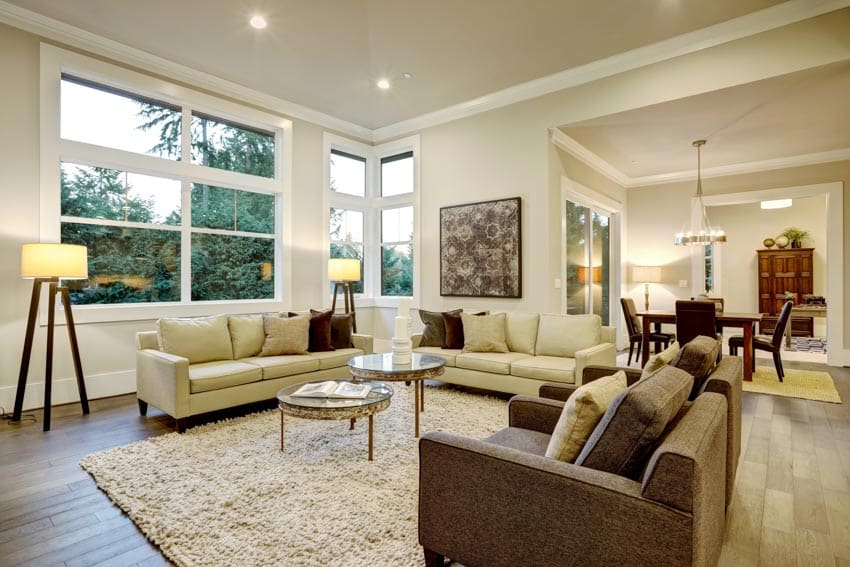
Of course, when it’s all said and done, you might have more questions than where you should put lamps in your living room. Adding to that, you might start to wonder how many you really need. At what point do you cross the line from having enough to having too many? How many do you need to make sure that your living room is well-lit and not so dark that it’s uncomfortable or hard to see?
A good general rule of thumb is to have four light sources in a living room. This doesn’t just include your floor lamps, though, but any other sources of light you have in the room.
With four lights, you should have enough light to light the entire room as needed. On the other side of the coin, you don’t want your floor lamps to compete if you have more than one in your living room as well. This means that you should make sure that each aren’t visually competing as well.
For instance, using lamps that match one another, or at least correspond, and making sure that they don’t vary in height too much to keep the source of the light visually consistent are all tips that can help keep your living room lighting effective and attractive.
See more related content in our article about how to light a living room with no overhead lighting on this page.

